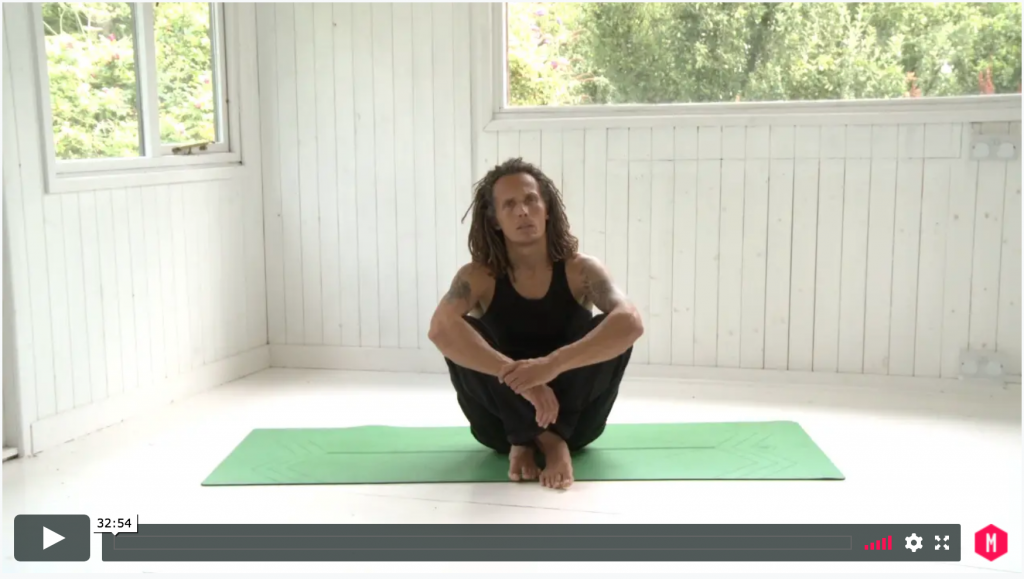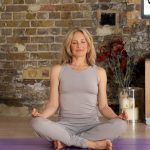
Kat Farrants acknowledges the role of intention setting in her life. After all, she used intention to create Movement for Modern Life. In this article she shares how she uses the idea of a ‘Sankalpa’ to embody her intentions and shares how you can benefit.
How can you get where you’re going without knowing where to head or aiming to get there? You need to type your destination into your Satnav in order to travel in the right direction, otherwise you’ll be circling around the roundabouts of life forever! Intention-setting had a pivotal role in my life. When I started to get specific and get conscious about what it was that I wanted more of or less of in my life, I found that like magic, things were starting to happen very differently to me.
However, I don’t use ‘resolutions’ per se as a way of navigating through the changes that I’m looking for in the year, I try to tap into the direction my inner guide is pointing to.
Instead, I have turned to the concept of a Sankalpa, in my yoga practice, in my yoga-nidra practice, and through life. It is slightly different to the idea of goal, or a ‘resolution’. The definition of Sankalpa is‘heartfelt desire’. On the face of it, it may seem that a heartfelt desire and a goal or resolution are the same things.
Look within to define your innermost desire
But actually, in my experience, the real difference in the setting of a resolution in the form of a Sankalpa and a usual New year’s style resolution is that usually resolutions involve you reaching out, beyond yourself and saying ‘I want more of this, or I want some of that’. It’s the ego chatting to itself.
The Sankalpa is slightly different. It’s you acknowledging that there is no ‘journey’ to get to where you need to go. In fact, you have already arrived, you are perfect as you are. The only journey you need to go on is realising this, and manifesting outward signs of what you already are.
Embody your desires as felt sensations
Which are really two very different ways of looking at life. For example, with the ‘goal’ of losing weight, if we focus on losing, say, 2 stone, we may achieve that goal. But we may be so intent on the destination, the losing of the 2 stone, that in fact we fail to incorporate full life-style changes and are just in the weight loss for the short-term effect. Which means that we will put the weight back on as quickly as it came off.
However, if we were to have a Sankalpa of ‘feeling lighter’, that might encompass a feeling through the body, not of hunger, or of a particular weight goal, but of feeling freer, less encumbered by a heavy body and feeling healthier. That’s just one thought of how we might use our intention.
Feel it right now
The other thing I do to super-charge my Sankalpa is to use the present-tense and to repeat it three times. I do this before my yoga practice and then again afterwards. So that my body feels what it’s like to have achieved what our heart truly yearns for. During my yoga practice, I forget about the Sankalpa, until the end, when I repeat it again, to seal in those wishes.

Make it meaningful
It’s important that the Sankalpa is something which reflects our inner-essence or true nature. It has to be something that’s tied to your Dharma, or your life’s path and purpose. The desire to fit into the latest fad or to reflect popular culture just won’t cut it, if it isn’t what is felt on a deeper level.
Our Dharma, our true purpose
We all have our own Dharma in life, the path which is our own and nobody else’s. It is our job to actively create the life we are meant to be living. We can’t sit back and passively say that the things happening in our life are our dharma, and ‘it was just meant to be’. No, I believe that life is meant to be actively and consciously designed, so that our higher intentions, our highest truth is available to us each day and in each decision that we have made.
I have friends who have said, as they near the end of their lives, that they have felt like flotsam on the waves. That they felt that life just carried them through, with no impulsion, no meaningful direction. Seen this way, life is a series of chance events. Of course, luck has a massive part to play in life. If you are reading this, chances are that you are born into a privileged society, and I would certainly recognise all the layers of privilege that being born in my body in these times has afforded me. But I believe that there is so much more we can do to learn to understand our true self. Each resolution should be in line with our higher intentions, powers, hopes and dreams.
Honouring our true nature
The Sankalpa is an honouring of our highest truth, a statement to remind ourselves of our true nature. Numerous scientific studies have shown that if you want more money, success, or whatever it is, you will only want more once you reach your goal. This is particularly true if your motivation is because your goal is something that society demands that you should want.
That is why the Sankalpa is more useful. It’s an internal torch that shines a light on who we really are which means that, unlike other new years resolutions, this is something that you will stick with, because it is who you really are. You have arrived, you are perfect, and you just need to become the most confident, best version of yourself to shine out.
Broad or specific, how to get it right
The Sankalpa can be a very broad notion, one which is a positive message to your true nature. ‘I am peaceful’ or ‘I am healthy’ or ‘I feel connection and love’. Or it can be as specific an intention as a goal might be. So to do this, you need to sit quietly with yourself, or move with conscious energy, and ask yourself what do you need to be doing to move yourself along your path.
Listen, commit, move forward and embody
So you may say, well, how do I know what I really want, what I really am, and what my heartfelt desires are? And this is where the practices of Yoga come in. We practice yoga to peel away the layers of ego to discover who we really are in this world. Yoga supports us to commit to the goals which align us to our true purpose. You won’t discover your Sankalpa by scratching your head and pondering. It’s more about the process of listening to your internal guidance, to your own heart.
Then there’s some kind of magic involved in publicly invoking, in the act of stating out-loud, or on paper what your intentions, hopes and dreams are. The universe just seems to love the process of consciously thinking things through and writing things down. When we take the time and effort to actually set our intentions, which come from a place of realisation of our higher selves, things seem to slip into place.
So this New Year, why not take a yoga nidra class, or settle peacefully into one of our Restorative or Yin classes and work on your Sankalpa for the year. I hope that 2020 turns out to be your most intentional year yet.
>> Why not try this yoga nidra class from Dan Peppiatt?<<

Small steps to change
Join Movement for Modern Life for a month-long course (13 January 2020 – 9 February 2020) to ignite your intentions for 2020. We would love to join you as you take steps towards a healthier, happier more sustainable life.

About Kat Farrants:

Movement for Modern Life’s fabulous founder Kat Farrants lives her yoga and her own yoga practice informs how she develops MFML. Kat wrote this post using inspiration of how she can take the small steps to move into a happier, healthier and more sustainable life. Please do join her on this journey and explore with us your happiest, healthiest, most sustainable life.





Leave a Reply